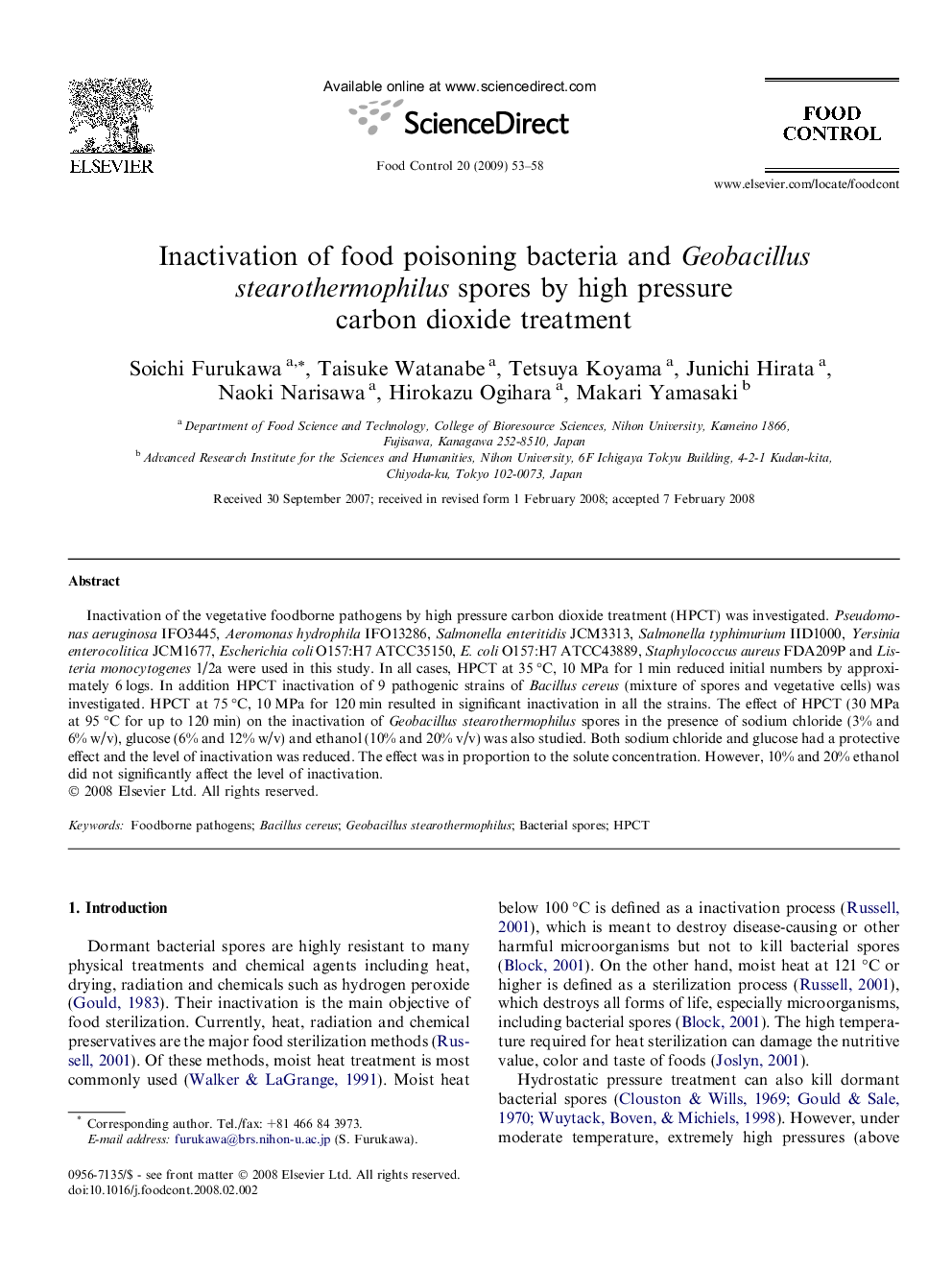| Article ID | Journal | Published Year | Pages | File Type |
|---|---|---|---|---|
| 4560436 | Food Control | 2009 | 6 Pages |
Inactivation of the vegetative foodborne pathogens by high pressure carbon dioxide treatment (HPCT) was investigated. Pseudomonas aeruginosa IFO3445, Aeromonas hydrophila IFO13286, Salmonella enteritidis JCM3313, Salmonella typhimurium IID1000, Yersinia enterocolitica JCM1677, Escherichia coli O157:H7 ATCC35150, E. coli O157:H7 ATCC43889, Staphylococcus aureus FDA209P and Listeria monocytogenes 1/2a were used in this study. In all cases, HPCT at 35 °C, 10 MPa for 1 min reduced initial numbers by approximately 6 logs. In addition HPCT inactivation of 9 pathogenic strains of Bacillus cereus (mixture of spores and vegetative cells) was investigated. HPCT at 75 °C, 10 MPa for 120 min resulted in significant inactivation in all the strains. The effect of HPCT (30 MPa at 95 °C for up to 120 min) on the inactivation of Geobacillus stearothermophilus spores in the presence of sodium chloride (3% and 6% w/v), glucose (6% and 12% w/v) and ethanol (10% and 20% v/v) was also studied. Both sodium chloride and glucose had a protective effect and the level of inactivation was reduced. The effect was in proportion to the solute concentration. However, 10% and 20% ethanol did not significantly affect the level of inactivation.
